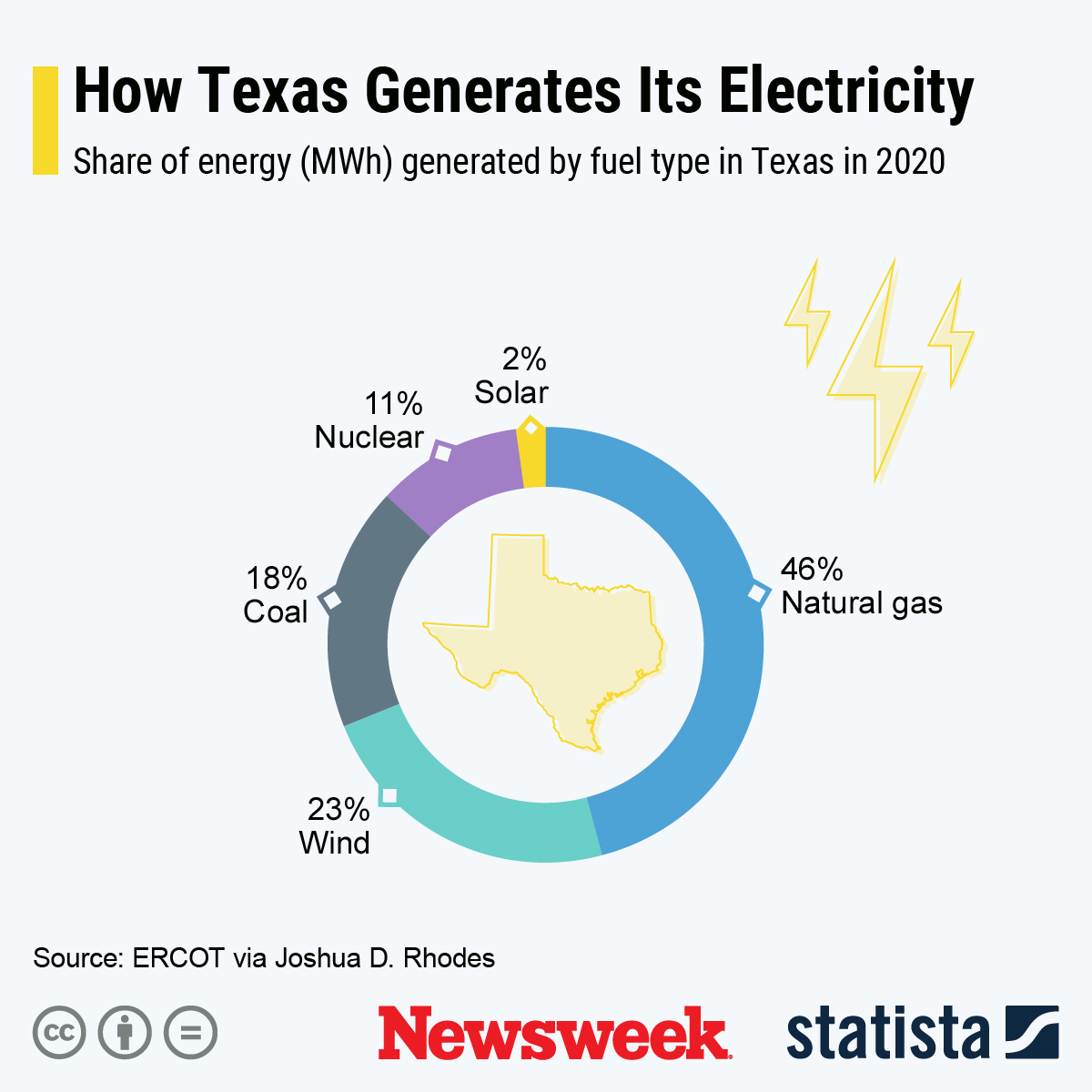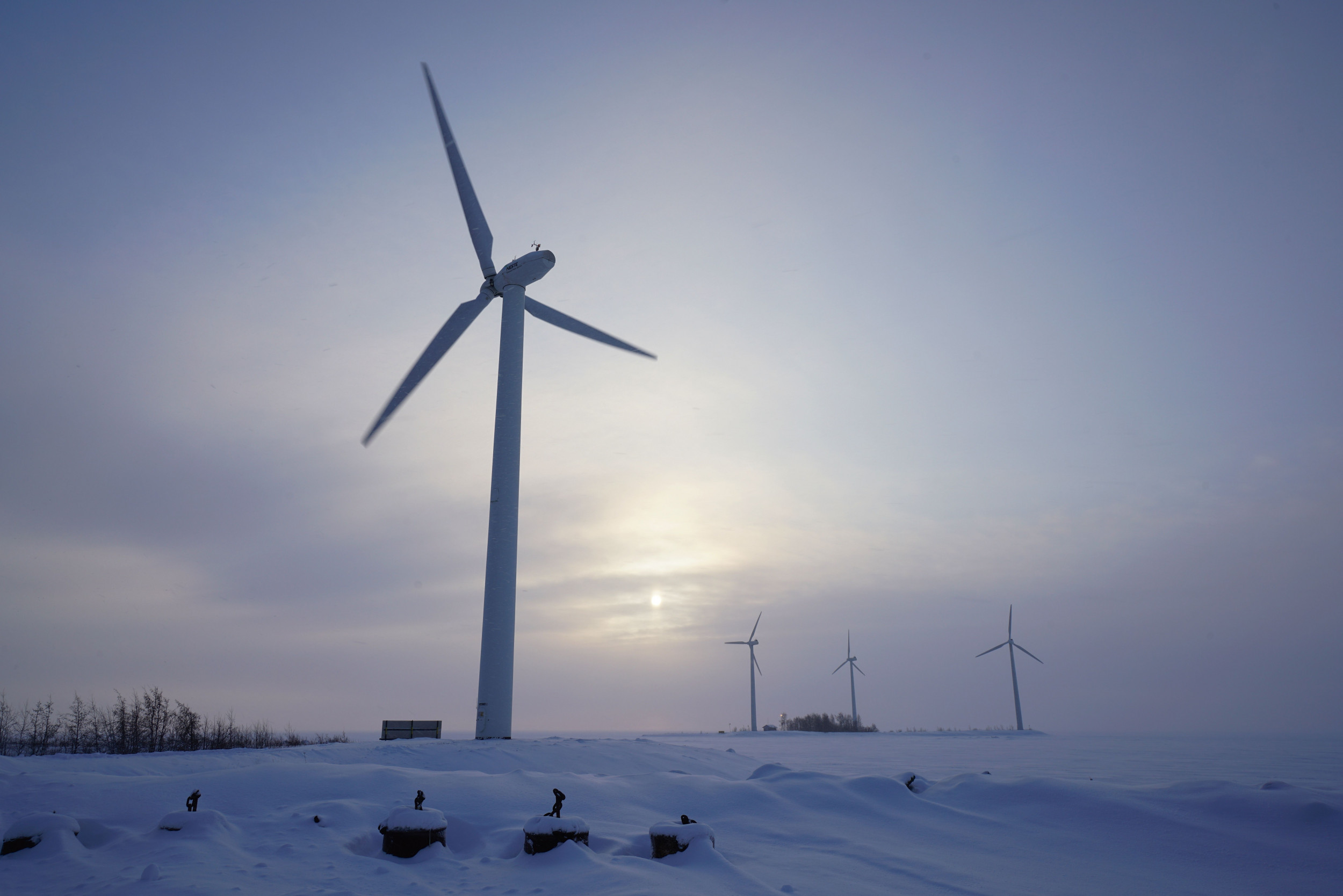More On: Texas
In the Texas governor's race, Beto O'Rourke and Greg Abbott fight over the border crisis and migrant buses to New York City
Texas found new dinosaur tracks after a river dried up because of the drought
Christina Powell, a mother from Texas, went to the mall half an hour after leaving home, but she wasn't found for three weeks
A report from a Texas panel shows how easy it was for Uvalde school shooter Salvador Ramos to get weapons before he turned 18 years old
Missing Christina Powell, a mother from Texas, was last seen rushing to work, but she never showed up
Temperatures in the state fell as low as 0 degrees Fahrenheit earlier this week, causing widespread disruption. Thermal energy sources, including gas, coal and nuclear energy were all affected due in part to frozen instruments.
But it was wind turbines which drew the attention of Sid Miller, Texas's Commissioner of Agriculture. He said in a Facebook post Tuesday: "We should never build another wind turbine in Texas. The experiment failed big time. Governor Abbott's Public Utility Commission appointees need to be fired and more gas, coal and oil infrastructure built."
Republican Congressman Dan Crenshaw said on Twitter that same day: "This is what happens when you force the grid to rely in part on wind as a power source. When weather conditions get as bad as they did this week, intermittent renewable energy like wind isn't there when you need it."
However, Texas generates most of its energy from other sources including natural gas—a fossil fuel which was also affected by the storm—as the below graph from Statista shows.

But wind turbines in Texas did indeed freeze during the state's coldest temperatures in over 30 years. Newsweek contacted ERCOT for comment.
So why did this happen, and how do turbines operate in locations where severe cold is much more likely?
'Very uncommon'
Several wind turbine experts have told Newsweek that the situation in Texas could have been avoided if the turbines had been equipped with what are known as cold weather packages, which can involve a number of precautions such as heating up turbine components and lubricants.
Samuel Brock, a spokesman for the American Clean Power Association, told Forbes on Tuesday it "hasn't been necessary" to install such kits in Texas where the climate is generally warm.
Benjamin Sovacool, professor of energy policy at the University of Sussex in the U.K., told Newsweek: "In Northern Europe, wind power operates very reliably in even colder temperatures, including the upper Arctic regions of Finland, Norway, and Sweden.
"As long as wind turbines are properly maintained and serviced, they can operate reliably in temperatures well below zero. Humans, to carry out servicing and maintenance and operation, are the most important factor, not the weather."
Iain Dinwoodie, head of advanced performance engineering at renewable energy consultants NaturalPower, said it is "very uncommon" for wind turbines to freeze, and said the operating range for "typical turbines" is between -4 and 104 degrees Fahrenheit.
Clifford Jones, a chemical engineer and visiting professor at the University of Chester, said the initial design of the turbine itself is also a factor. Special "cold-temperature steels" are used in wind turbines that are destined for colder climates, while lubricants are used which are capable of remaining at the right viscosity for those temperatures.
He told Newsweek: "In terms of annual average temperature Texas is the third-hottest U.S. mainland state, being exceeded only by Florida and Louisiana. Wind turbines at such locations not incorporating these features can be upgraded by installed heating. Such upgrades have been consistently successful at wind farms at cold locations."

Are the criticisms valid?
In some ways. Dinwoodie points out that when some "active" anti-icing systems are installed, they can fail when weather conditions knock out existing power supplies because they rely on the grid to work in the first place.
He also said: "On a 'bad' Nordic site where very cold temperatures are present and at elevation, we might see up to 10 percent reduction in annual energy production as a combination of icing stops or reduced efficiency in operations but most of the newer, larger turbines have anti icing systems—although these have varying degrees of effectiveness in my experience—which should significantly lower this."
Another downside is that blades which do not have an ice-prevention system installed may need to be stopped temporarily while cold temperatures pass. Jian Wang, a professor of aircraft technology and his team at London's Kingston University said doing so "introduces safety hazards where big chunks of ice falling off the blade could present a hazard to people in and around wind farms".
However, Wang also told Newsweek: "With the current range of anti-icing measures available, wind power is an effective source of energy in cold climates, because icing can be managed and the quality of wind that is normally available in colder locations.
"Although fossil fuels may have met our needs in the past, they have caused significant problems for the environment and to our health. They are also a finite resource which is reducing with the growing market demand for energy, so relying on them would not be a wise long-term strategy."
This article has been updated with additional information about cold weather packages.






















